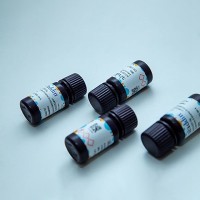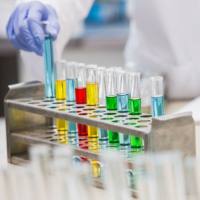Multiple Fluorescence-Based PCR-SSCP Analysis with Primer-, Post-, and Internal-Labeling
互联网
641
Polymerase chain reaction-single strand conformation polymorphism (PCR-SSCP) analysis is a simple and sensitive method to detect DNA alterations including even one point mutation. A disadvantage of PCR-SSCP, despite its sensitivity, is the necessity to use radioisotopes. To avoid radioisotopes, silver staining was introduced for band detection (1 ). In the fluorescent amplification refractory mutation system (ARMS)-SSCP using two different fluorescence-labeled primers, bands were visualized by UV-transtilumination (2 ). Hayashi et al. (3 ) and Takahashi-Fujii et al. (4 ) developed F-SSCP using an automated DNA sequencer and a fluorescence-based image analyzer, respectively. In their systems, however, band detection was dependent on a single species of fluorescence. Ellison et al. (5 ) reported a method to detect multiple fluorescence using Applied Biosystems model 373A DNA sequencer (ABI373A) (Perkin Elmer, Applied Biosystems Division [PE-ABD], Foster City, CA), which can detect four different fluorescent colors in the same lane without controlling gel-temperature. We designed and attached a gel temperature-controlling system to ABI373 A and developed a sensitive method of multiple fluorescence-based PCR-SSCP (MF-PCR-SSCP) analysis in which we introduced three different methods to fluorescently label PCR-amplified DNA fragments 6 –8 .









